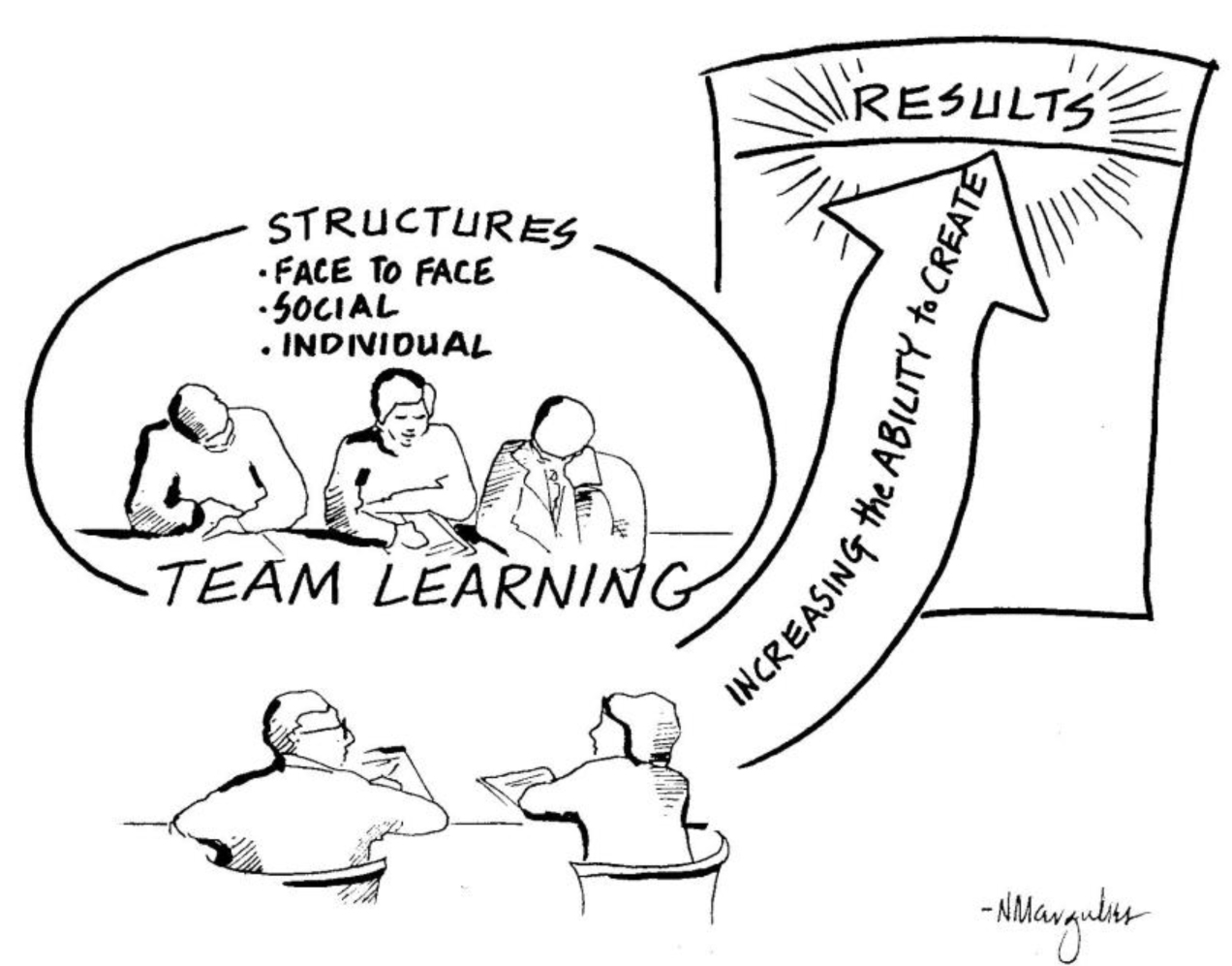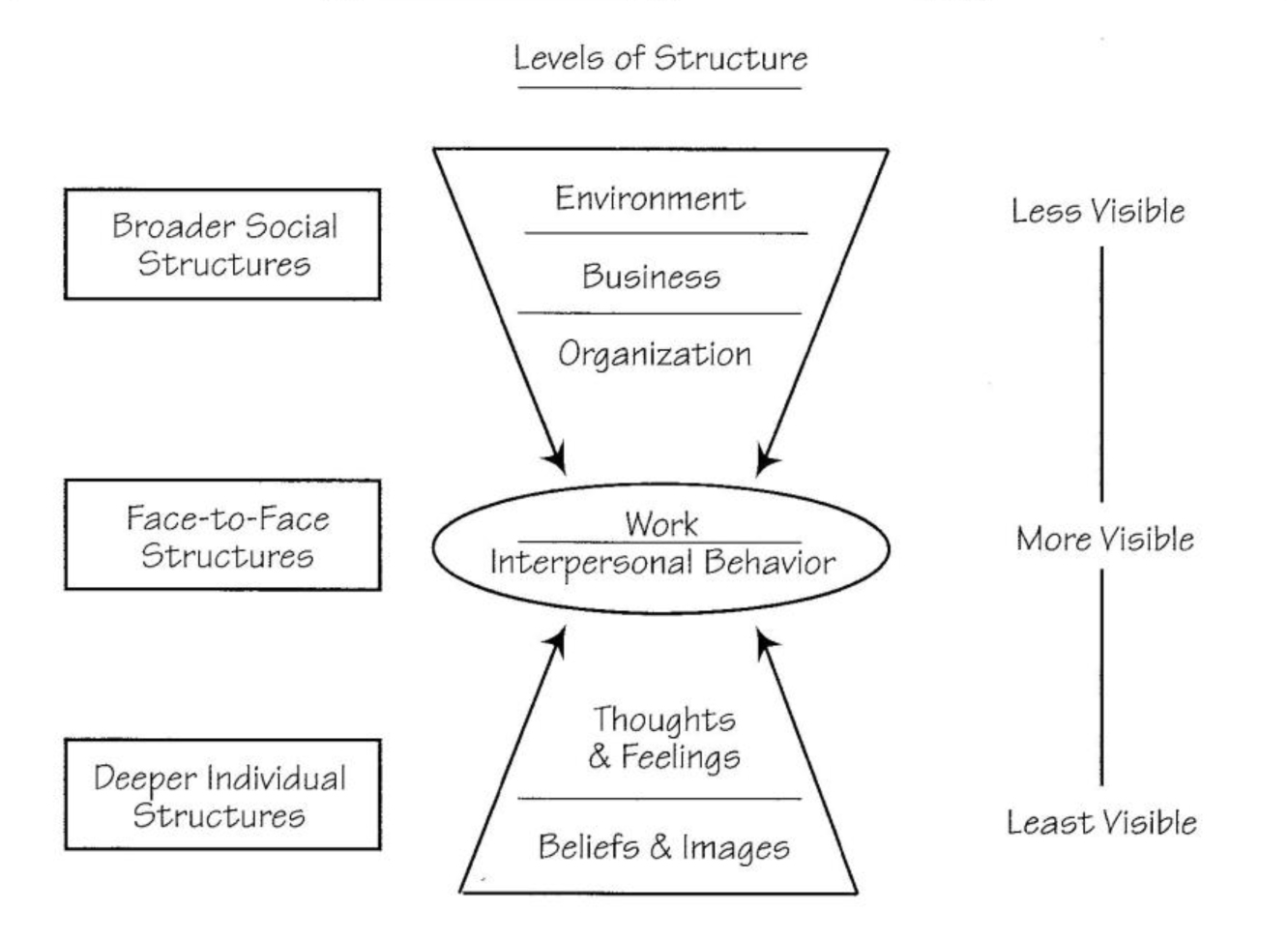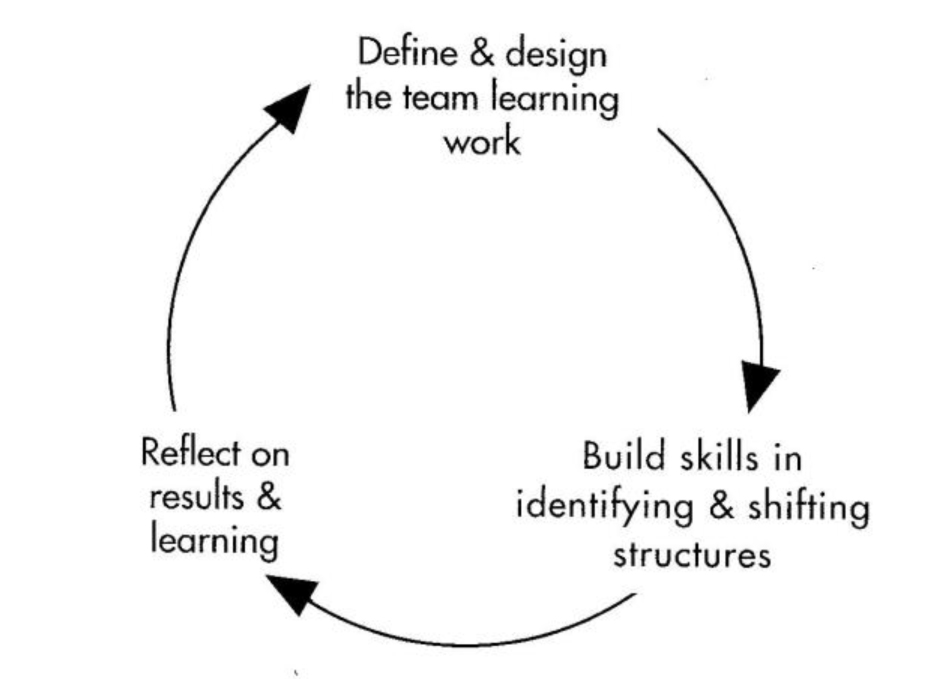As of 1993, Sigma Tech (a fictional name) was one of the most successful small corporations in the U.S. The company’s business was both humanitarian and highly profitable, and its workforce was committed to the company’s vision and values. Many Sigma Tech employees also had a significant stake in the company’s future through ownership of its publicly traded stock. The company had an energetic CEO who was committed to expanding the business, and an executive team that was made up of young, dedicated, and ambitious vice presidents. All the elements were in place for a positive future.

Yet Sigma Tech was stuck. Its executive team members found themselves unable to make basic decisions about how to ensure the company’s continued growth. Should it be fueled by new product introductions? What about the development of new distribution channels? Would geographic expansion work? Consistent with their values of Total Quality and empowerment, they established numerous task forces and committees. While these groups met frequently and absorbed hours of middle management time, they made few real decisions and little, if any, progress. The vice presidents were perceived as having conflicting political agendas, and the managers under them felt as if they were in the position of implementing contradictory orders. Morale was down, middle managers were frustrated, and trust between middle and upper managers was at an all-time low.
The Need for Team Learning
Scenarios like the one at Sigma Tech are all too typical in executive and management teams. Frustrated team members from different organizations share common stories about team failures:
- “Our executive team does not know how to model collaborative, productive behavior for the organization. In fact, we often model the opposite. What can we do to change this pattern?”
- “Our business success depends on our ability to break out of stovepipes and work effectively in cross-functional teams. But these teams consist of people who report to different executives with different agendas, often operating under disparate reward systems. How do we get them to work effectively together?”
- “Every major change effort we try — from Total Quality, to re-engineering, to self-managed teams — seems to produce far less than satisfactory results. After some initial success, the key teams that are implementing change get stuck.”
- “Our management team has tried several kinds of team-building activities. Everyone feels better for a little while afterward, but then we slip back into repetitive, time-consuming, and nonproductive activities that have little to do with our real work.”
These concerns raise some general questions about team performance: How can teams function optimally? And why do they become dysfunctional in the first place? In many cases, a team stagnates despite persistent and well-intentioned attempts to address key issues. Or, interventions appear to help initially, but short-term progress quickly evaporates. To create long-term improvement, a more systemic discipline of team learning needs to be developed — one that integrates existing approaches and tools while providing a framework for the creation of advanced technology that can enable teams to develop greater breadth and depth of capability over time.
A Systemic Map of Teams
For team learning to be a viable discipline in an organization, it must be linked directly to results. In other words, it must enhance a team’s ability to do its work, to make decisions, and to deal effectively with the business issues team members face every day. In this context, team learning can be defined as a team’s ongoing, systematic, and systemic activity of continually increasing its ability to create its desired results.
By carefully observing teams in operation, we have begun to identify the underlying forces that influence a team’s ability to produce results. There are at least three levels of structure that exert powerful influence on teams: Social Structures, Face-to-Face Structures, and Individual Structures. A map of the presence and interaction of these different forces can serve as a diagnostic and a planning framework to guide team learning and enhance performance (see “Levels of Structure”).
In many cases, a team stagnates despite persistent and well-intentioned attempts to address key issues. Or, interventions appear to help initially, but short-term progress quickly evaporates.
Social Structures. The organization in which the team exists, the business of that organization, and the cultural environment in which the organization operates significantly influence a team’s performance. Organizational forces that make up this social context include culture (stories, norms, acceptable behaviors), organization design (who reports to whom), and processes (how work is designed). Business forces include business and market strategies, and products and customers. Environmental forces include the industry, business environment, and culture in which the organization exists.
Face-to-Face Structures. The face-to-face structures are part of the visible work of a team that includes clarifying desired results, setting direction, managing the team process, designing and structuring activities, and executing the day-to-day tasks. Many of these activities involve and depend on effective interpersonal interactions with others, which can either support or hamper the team’s ability to produce results. For example, if a team member has questions about someone else’s thinking or actions and cannot raise those concerns in an open and constructive manner, the team’s results may be seriously compromised.
Individual Structures. Individual structures that affect team performance consist of what each person brings to his or her participation on the team. This includes the person’s genetic makeup, set of life experiences, deeply held beliefs, and mental models and feelings about “how things ought to operate around here.”
This structural framework illustrates the broad nature of the forces at play in team functioning and how these forces intersect at the face-to-face level. The face-to-face structures are thus a window through which a team can discover how broader organizational structures and deeper personal structures influence its performance.
Creative Tension: The Underlying Structure of Change
Of all the potential social, face-to-face, and individual forces at play in a given team, there are usually a few high-leverage structures that significantly influence a team’s ability to create its desired results — some combination of the social, face-to-face, and individual structures described above. By learning to identify those high-leverage structures, team members can redesign them to be more congruent with the team’s vision.
So, how can teams change their high-leverage structures in order to enhance their performance? One useful framework is the concept of creative tension. When an individual or a group of people holds a clear picture of what they want to accomplish while simultaneously maintaining an awareness of their current reality, they generate a natural tension that can be used to move the team toward its goal. The principle of creative tension suggests that teams can dramatically improve their ability to move toward their desired state by learning to do three things: 1) be clear about the results they want to create; 2) understand the underlying structural dynamics that influence their ability to create; and 3) work on changing those underlying structures in order to bring the current reality in line with the desired outcome (see “Working with Creative Tension” on page 4).
Identify and Change Structures
As team members use the principles of creative tension to identify those underlying structures that are preventing them from reaching their goals, there are opportunities to observe how those structures play out in their day-to-day interactions. The team’s challenge is to identify those structures that are most limiting, to understand their individual and collective responsibility for creating or sustaining them, and to begin to experiment with new structures and behaviors.
Levels of Structure
 There are at least three levels of structure that exert powerful influence on teams: Social Structures. Face-to-Face Structures, and Individual Structures
There are at least three levels of structure that exert powerful influence on teams: Social Structures. Face-to-Face Structures, and Individual Structures
The face-to-face structures are the most visible and therefore the easiest to observe and reflect on. These structures are the repetitive patterns of interactions people use when they work together. They are more evident in situations where stress or conflicting views among different stakeholders are present, or when people need to ask for support or to express concern about another person’s actions. The following guidelines can help in this difficult process of identifying and changing strutures:
- Work to create real business results. Use real business issues as the forum in which the team learning occurs. Tie the team learning work directly to creating desired results; do not allow it to become an end in itself.
- Learn to see and change face-to-face structures. Learn to identify and modify the structures that guide how team members interact, do their work, and manage themselves as a team so that the structures begin to help the team achieve better results.
- Begin to see the relationships between structures. Notice the interactions between the face-to-face, organizational, and individual structures. For example, describe how team interactions are influenced by team members’ mental models and by the larger power structure in the organization.
- Learn to influence broader organizational and business structures. Identify those forces the team can change, those they can influence, and those they can recognize but not change. For example, team members can influence but not eliminate the degree of competition between their bosses, just as they can recognize the effects of, but cannot change, the organization’s reward system.
Team Learning at Sigma Tech
The approach to team learning outlined above enabled the people at Sigma Tech to gain a systemic understanding of how they were getting stuck in unproductive team structures. For example, when they viewed their company using the “Levels of Structure” diagram, they uncovered the following dynamics:
Working with Creative Tension
- Clarify the vision. Define the specific business and team development results the team wants to create through the team learning effort. Articulate a set of behavioral ground rules or values to govern and guide how members will work together to achieve the results.
- Develop an understanding of the current reality. Move beyond event-level or personality-based explanations. Collectively arrive at a systemic picture of the key forces at play in the team.
- Collaboratively design the learning process. Based on initial pictures of current reality and desired outcomes, create a common picture of the team’s learning journey. This map of the journey should define measures of success that are tangible and task-related, as well as identify key developmental goals and learning activities and processes. Finally, it will strengthen the process if each team member has specific personal goals related to the team’s learning goals.
Sigma Tech’s social and business environment demanded consistent quarterly increases in revenues and profits. The organizational culture was highly competitive and characterized by a positive, “can-do” attitude — no challenge was too difficult. Their organizational and business processes reflected a high dependence on cross-functional teamwork and on informal, non-hierarchical decision making. These social forces were reinforced by underlying values of team play. The primary mental model of a “team player” was a person who was courteous and respectful, supportive of other people’s goals and efforts, and focused on potential accomplishments rather than problems.
When Sigma Tech was on a roll and times were good, things worked extremely well. But when the company was faced with increasingly tough choices and challenges, the same social structures and underlying mental models became their worst enemies. For example, because of the entrenched “can-do” attitude, Sigma Tech’s forecasting processes swept reality under the rug and continued to make overly optimistic projections, even when the market realities simply did not justify such forecasts.
On the face-to-face level, managers who felt dependent on the help of people in other parts of the company did not question or express concerns about actions being taken by others because they feared being perceived as “negative” and “not a team player.” The managers thought, “I need to support what they (other managers, departments, or functions) are doing or else they will not provide me with what I need to get my job done.” The consequence of this mental model was that ideas and possibilities for the future were constantly generated, but people held back from making choices. As a result, the company’s focus became increasingly diluted. At the same time, the underlying mental model of “team players” stopped people from confronting others when their behavior was perceived as a problem. Creative opposition was virtually missing from face-to-face interactions. Problems were masked in the spirit of, “When things get tough, we’ll all pull together and make it work!” All the while, frustration simmered and the company’s ability to generate profitable growth became increasingly strained. Finally, the bottom fell out. Revenues flattened out, profits sank, and the stock price fell over 50% within a matter of weeks.
Engaging in an Ongoing Learning Process
Through focus groups, management off-sites, dialogue sessions, and individual conversations, the Sigma Tech managers began to unravel these central issues. They started by identifying the structures that were keeping them stuck, in order to see how their own mindsets and actions were perpetuating those structures. They also worked on telling themselves the truth about the current reality while revisiting their basic values, clarifying their vision, and developing new ground rules for interpersonal interactions. Ultimately, Sigma managers began to change their underlying patterns of thought, to redesign the broader organizational processes, and to modify their face-to-face behaviors for enhanced results.
The team learning process used by Sigma Tech is both cyclical and ongoing (see “The Team Learning Cycle”). Changing the underlying team structures by establishing creative tension and closing the gap between vision and current reality is a process that builds over time. However, the manner in which a specific team engages in this learning process is influenced by its own challenges and desires. Any team may engage in this iterative process by:
- Clarifying its vision;
- Identifying one or two key visible structures;
- Learning to change these structures for enhanced performance;
- Perceiving how changes in these more visible structures affect the broader and deeper structures;
- Learning how to influence the broader and deeper structures for enhanced performance;
- Continuing this process in an ongoing, cyclical fashion.
Reflect on Results and Insights
Reflection on results and insights is an ongoing and integral part of every aspect of team learning. It is important throughout the process to step back and assess how the team has changed and where it currently stands. The greatest risk to a team as it gains momentum is its own success. Having gone through the difficult challenges of committing to, and then following through on, a path of development, a team must continue to articulate, share, and maintain its individual and collective learnings.
The Team Learning Cycle

Team learning can be thought of as an iterative process of designing the team learning work, building skills In identifying and changing structures, and reflecting on results and learning.
As we saw with Sigma Tech, this ongoing sharing and assimilation enables a team to commit itself to continuous learning, to shift its fundamental orientation from knowing to learning, and to dramatically increase its capability to produce outstanding results. Without this sharing and assimilation of learning, the team risks slowly drifting back to its old ways, or becoming frozen in a new pattern that has its own limitations.
Joel Yanowitz Is managing director of Innovation Associates. Inc. (Framingham. MA) where he helps clients design and implement organization change strategies.
Steve Ober. EdD. is a senior consultant and project leader for Innovation Associates’ team learning efforts.
David Kantor. PhD. Is a family therapist and consultant with Innovation Associates. He is also the founder and director emeritus of the Kantor Family Institute, a lecturer at the Harvard Medical School, and a consultant to the Dialogue Project at the MIT Center for Organizational Learning.
Editorial support for this article was provided by Kettle T. Wardman.
